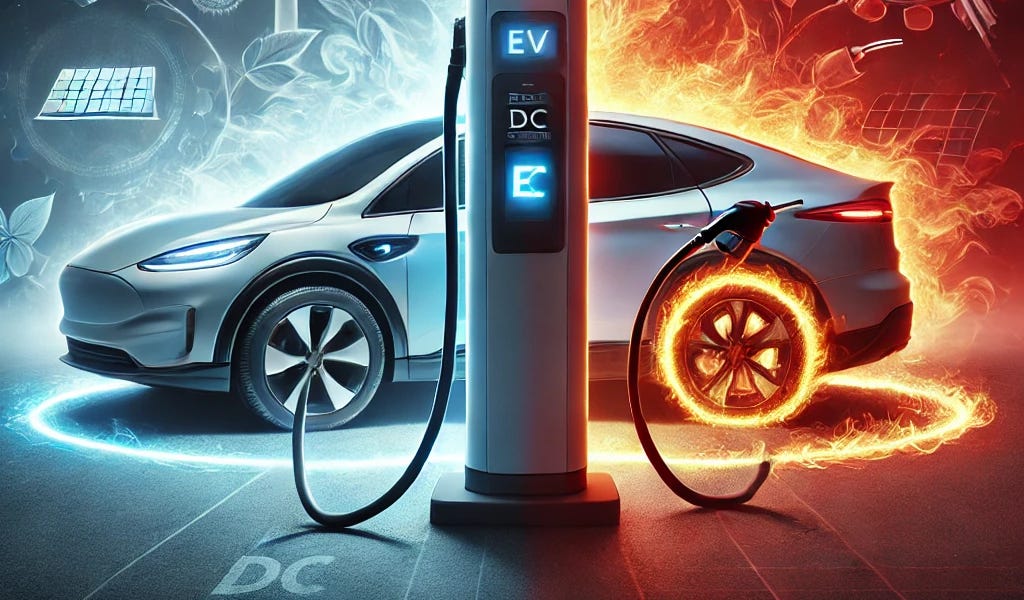I realize the energy still has to come from the traction battery, but don’t most EVs use heat pumps now? The energy use would be the same as using the A/C in the summer (though the battery does have less “oomph” in the winter due to ambient temperature).
My hybrid just uses the engine block as a heat source and storage (coolant pump is electric and circulates coolant through the warm engine block when it’s in EV mode and occasionally kicks the engine on to warm it back up when needed). I think the coolant also loops through the motor controller and DC-DC converter which adds a little heat, but not really enough to heat the cabin with alone.
I wonder if it would make sense on EVs to have some kind of “chargeable” thermal mass you could pre-heat while it’s charging and extract as you drive (and/or acts as a reservoir the heat pump can draw from)
Yes, heat pumps are really common in new EVs, but I’m not sure if it’s most worldwide or not.
Your idea about thermal storage is interesting; I’m very much unclear on whether it would make sense to do that or simply have a bigger battery or some amount of insulation on the passenger compartment.
Adding thermal storage would require mass to be added, unless some existing component could be converted to dual-purpose. More mass in an EV means lower range and an increase in the already high vehicle weight.
And I can’t imagine the thermal accumulator + insulation would have a higher energy intensidensity than just the battery alone.
After thinking about it a bit more, a bigger battery would probably be the most practical.
Using my hybrid as a reference point (it uses the whole engine as a thermal mass for heat storage), the stored heat only lasts about 5-10 minutes at most before the engine kicks back on to warm it up again (the controller lets it cool to the lowest “operating” temperature for efficiency). If it could use the full stored heat in the engine, it would probably only be good for another 5 minutes at most. Granted, it’s using that heat directly with a traditional heater core rather than feeding a heat pump.
Given that it would be used seasonally and be “dead” weight the rest of the year, I’m not sure adding a thermal mass would be all that practical unless it’s something that can be heavily insulated and super-heated beyond the temperatures engines run at or has an additional year-round use.
The only downside to a larger battery is purely a human perception/marketing issue. The extra battery capacity would most likely be advertised in the range, and people would still probably be upset about the reduced range in the winter. It would have to be, ideally, not factored into the range and act as a “reserve” capacity.
Regardless, yeah, better cabin insulation would also help, to a point.
I just work around the problem by not running the heat most of the time (barring the need to defrost/defog). Most of my trips are short, so I just wear my coat/gloves and deal with the cold lol.
How about using the thermal mass for both heating and cooling? Too bad EVs don’t have throwaway power like hybrids, could use the excess to heat/cool the mass as necessary. Probably still not as efficient as raw power storage.
Tangentially, I was looking at the cost of converting an existing house in Arizona to be entirely off-grid solar. The average single-family detached house in the US south uses 16,000kWh annually (the south uses more energy overall than any other region of the country). If I bump that figure up to 20,000kWh–which should allow for a purely electric home with zero gas for heating or cooking–and then plan a system that can produce 200% of my projected power needs, then I need a solar array that’s about 30x30 (assuming roughly 20% efficient microcrystalline cells). (The actual array size varies based on where you are installing, since different areas have different annual amounts of sun; being able to produce more power than you project means that you’re still producing power on more overcast days.) The solar panels to do that are about $18,000 right now, and have a projected lifespan of 25-40 years, with a .5% loss of efficiency annually. If my current power bill is $100/mo (it’s actually more), and I’m currently using about 10,000kWh annually (which I am, but I also heat with a wood stove and have a gas stove for cooking), then over 25 years my electric bill is $30,000, which far exceeds the costs of the solar array alone, for less power.
Food for thought, y’all.
OTOH, living in Arizona has other problems, like, being hours from fucking anywhere, and water.
Rather than doubling your system generation size, it would be better to store the generated electricity. You can have a massive system, but it still won’t generate anything at night.
Two points. First, yes, you need batteries, that kind of a given. Second, increasing the systems generation size means that you can charge batteries while also consuming power. Third, increased generation system size means that you’ll still be generating sufficient power during the rare times that southern Arizona is overcast.
You would generally want to be as energy efficient as possible though, because being off-grid does make you vulnerable to insufficient generation capacity at any given time.
The grid is still natural gas or coal mostly. And even solar enthusiasts don’t charge their cars primarily in the day (we all charge our cars at night, when solar no longer is helping).
We shouldn’t be tracking electricity -> motion per se. We need to be tracking natural gas -> electricity -> motion, which has a rather inefficient step.
Hybrids at 40% thermal efficiency, like Prius / Toyotas Atkinson engine, should lead to less overall burning of fossil fuels than a 40% coal plant making electricity -> 5% losses in wires -> 20% losses in the battery -> 10% losses in the electric motor.
Now combined cycle natural gas is 60% thermally efficient. And that’s where EVs gets their biggest boost IMO. But not all Nat Gas is combined cycle, it differs strongly from location to location.
This varies from region to region. My region is primarily hydro, in fact, about 0.1% is non-renewable. So, depending on where you live, electricity may be more thermally efficient than ICE. Also, you’re ignoring the pollution control aspect. Even if your hybrid is more thermally efficient, it will still generate more pollution than any electrical generation method except perhaps coal, and I’m not certain about that. Your car’s ICE engine also won’t benefit from any of the upgrades to the electrical grid, while your electric car will. This also may not matter in some regions, since some places like America in general, don’t expect to see a reduction in coal use for a decade or more. And yes, I’m aware that the electricity generation mix in America varies a great deal from region to region.
ACEEE actually thinks that Prius Prime emits the least pollution for cars today, including EVs.
https://www.aceee.org/greener-cars
EVs universally weigh more, leading to more PM2.5 / micro plastics pollution from the brakes and tires. (Remember that Prius / Hybrids also have regenerative braking, so EVs cannot take Regen as an advantage).
Weight is key. Not only for pollution but also for efficiency. Prius / Prius Primes lighter weight allows for higher efficiencies.
Prius is on the list if you look it up and would be in the top 10. But I think ACEEE preferred encouraging people to buy the Prius Prime instead of something.
Yes, the Prius has a lot going for it. I personally would rather have a smaller EV instead, but that’s not an easy thing to find right now, either.
Here’s a snapshot of the UK grid’s energy mix this morning: https://www.energydashboard.co.uk/live
Gas is the largest single component, but gas plus coal together comprise only 42% of the energy mix. The rest is nuclear and renewables (though I quibble about biomass being counted as a renewable).
And if you look at the change of the energy mix over time, fossil fuel usage has been declining, though taking massive powerplants offline is not a quick process.
I appreciate the stats.
Gas is the largest single component, but gas plus coal together comprise only 42% of the energy mix. The rest is nuclear and renewables (though I quibble about biomass being counted as a renewable).
And if you look at the change of the energy mix over time, fossil fuel usage has been declining, though taking massive powerplants offline is not a quick process.
Its going to be difficult to dislodge combined cycle natural gas. Its very efficient, very cheap to spinup. Yes its still a fossil fuel, but its the best of fossil fuels. 60% efficiency means getting 50% more energy per CO2 (compared to 40% traditional plants). As far as I’m aware, natural gas is cheaper than most battery technologies.
Nuclear is good, and continues to be a major supplier at night (when people are likely charging cars). Natural gas drops by 5GW at night, so that’s a good sign and the grid at night might be less carbon (even if there’s less overall energy due to missing solar). So more nuclear energy into the mix might mean that night energy was better overall. Hmmmmmmm. Okay, I’ll accept your point overall.
Your grid is, perhaps. And I happily charge my EV from my installed solar most times when I need to charge.
And I happily charge my EV from my installed solar most times when I need to charge.
You don’t ever charge at night?
Occasionally, but I work from home and my wife’s commute is fairly short, so we can often time the roughly once a week charging so it’s during the day.
My solar panels charge my Powerwall during the day. My powerwall powers our house and charges our EV at night. When the panels are no longer generating anything.




